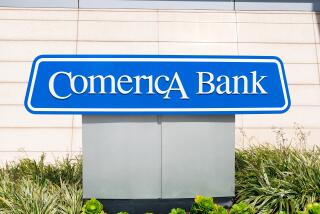Small Decline in Bank Failures Expected
- Share via
WASHINGTON — Bank failures in the oil-patch states of Texas, Oklahoma and Louisiana pushed closings nationwide to a post-Depression record in 1987 and a top federal regulator said Tuesday he expects only a small improvement this year at best.
The Federal Deposit Insurance Corp. reported 184 banks closings among the 14,000 commercial banks it insured last year. More than half the failures -- 95 -- came in three states plagued by the moribund oil market. Fifty banks closed in Texas, 31 in Oklahoma and 14 in Louisiana.
An additional 19 banks required assistance from the insurance fund to stay afloat. Fifteen of those were in the three oil states.
“Our current hope would be that next year would be a little better in terms of bank failures,” FDIC Chairman L. William Seidman said. “If it is, it’ll be by a small margin. Much will depend on what happens in the energy-producing states.”
Early last fall, Seidman said he expected bank failures to decline to about 150 in 1988, but he said Tuesday in an interview after an FDIC board meeting that the recent drop in oil prices has helped to dampen his previous optimism.
Oil prices plunged early in 1986 from more than $30 a barrel to the $15 range. They recovered to more than $20 a barrel, but fell again late last year after OPEC nations failed to reach an agreement that would have supported prices.
Seidman said banks so far have suffered no great harm from the Oct. 19 stock market crash but added, “It does create uncertainty.”
“In those areas already having economic problems, (any slowdown caused by crash) could make it worse.”
Six-Year Surge
Seidman called 1987 “one of the most difficult and unusual years in banking since this corporation has been in business.”’
1987 marked a six-year surge of bank collapses. The 184 failures compared to 138 in 1986, 120 in 1985, 79 in 1984, 48 in 1983 and 42 in 1982.
The figures are still small when compared to the early 1930s when deposits were not insured and rumors could spark runs by people frantic to withdraw their money. Four thousand banks collapsed in 1933, the year before the FDIC was created. From 1934 to 1939 they averaged 67 a year, little more than one-third of the current rate.
Among the 3,200 savings institutions insured by the Federal Home Loan Bank Board, 17 closed their doors in 1987 and 26 required assistance to entice a stronger institution into taking them over. That compared with 21 thrift closings and 22 assisted mergers in 1986.
More thrifts were in trouble than those numbers indicate. Until funds from a congressionally authorized recapitalization began flowing in October, bank board activity had been slowed by the cash-strapped state of the Federal Savings and Loan Insurance Corporation.
Bank Board Chairman M. Danny Wall has pledged to close, merge or otherwise resolve more than 50 troubled thrifts this year.
There were several bright spots. Failures of banks making primarily agricultural loans eased to 55 last year from 59 in 1986, and Seidman said he expected perhaps a 25 % improvement in that area.
He also noted that 23 states had no bank failures, and institutions in many of them posted record profits.
One problem area -- bad loans to Third World countries -- does not show up in failure totals because they have been made by large money-center banks that have so far been able to absorb the losses. But that problem is actually more severe in dollar terms and is expected to contribute heavily to the lowest overall earnings for banks since 1934.
The FDIC and FSLIC insure deposits in member banks up to $100,000 The FDIC fund stood at $19 billion at the start of 1987, and Seidman told the board meeting Tuesday, “We will have to struggle to break even.”
More to Read
Sign up for Essential California
The most important California stories and recommendations in your inbox every morning.
You may occasionally receive promotional content from the Los Angeles Times.













